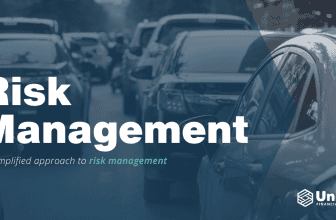
In today’s digital ecosystems, your strongest innovation may also expose your biggest vulnerability:
your people. For IT, software and AI companies in California, it’s no longer just about firewalls and endpoint protection. Attackers know that one misclicked link, one convincingly spoofed email, or one moment of fatigue can trigger a breach.
This post explores how human error and social engineering are transforming into major threat vectors, how they impact tech‑driven businesses, and how you can shore up your protection – including via tailored insurance solutions.
What Social Engineering and Human Error Really Look Like in Tech
When we speak of social engineering, we mean human‑targeted attacks that exploit trust, urgency and routine rather than system vulnerabilities.
Examples you’ve likely seen in your ecosystem:
- An employee receives a help‑desk email from a familiar vendor, clicks a link, and inadvertently gives up credentials.
- A cloud‑file share notification appears legitimate but leads to a malicious payload.
- Someone working late drops their guard and accesses sensitive data using relaxed permissions.
According to recent data, around 60% of breaches involve a human element, and social engineering remains one of the most common entry pathways for attackers.
For companies building software or applying AI, the consequences are more than technical: faulty data, compromised models, downtime, regulatory exposure and client trust erosion.
Why IT, Software and AI Companies Face Elevated Human‑Risk Exposure
Your landscape presents unique risk factors:
- Highly integrated vendor‑ecosystems, multiple SaaS services and APIs mean one link can compromise many.
- AI‑driven workflows amplify downstream impact: erroneous input, compromised access or manipulated data can propagate through your models and systems.
- Rapid growth teams and startups often prioritize speed over deep security culture, which increases human‑risk exposure.
- California’s regulatory environment (e.g., CPRA) means a human‑error incident can trigger significant fines or class‑action exposure.
In short: human risk doesn’t exist in isolation. For a tech business, it becomes an operational, strategic and insurance issue.
Key Human‑Error & Social Engineering Statistics You Should Know
Here are some meaningful data points you can reference with your stakeholders:
- Approximately 95% of cybersecurity incidents have a human error component. (Source: ISS Partners)
- Social engineering‑related attacks are on the rise, with phishing, vishing and impersonation campaigns all gaining effectiveness. (Source: Secureframe)
- In a survey of businesses, the average cost of a social engineering incident was cited as around US$130,000, and losses escalate when paired with other cyber types. (Source: The SSL Store)
Use these figures to underline urgency with your executive team, board or client‑stakeholders.
How to Reduce the Risk of Social Engineering and Human Error
Here are structured steps you can implement:
1. Promote a Security Conscious Culture
Training helps – but culture is crucial. Build routines where employees are encouraged to pause, verify and escalate unusual requests rather than “just clicking through”.
Embed micro‑learning, phishing simulations, and executive and non‑executive training. Recognize that fatigue, rush and context switching drive most human‑error incidents.
2. Align Controls with Human Behaviour
Consider how workflows, tools and incentives influence risk:
- Introduce strong verification protocols for financial or vendor requests.
- Make security tools usable and integrated rather than optional.
- Limit permissions and enforce “least privilege” to reduce the severity when someone makes a mistake.
3. Update Coverage and Incident‑Response Plans
Traditional cyber insurance may not cover losses triggered by human‑error or social‑engineering events. You must verify:
- Is your policy explicit about social engineering and human‑factor incidents?
- Does your incident‑response plan include human‑error scenarios (help‑desk spoofing, phishing, impersonation)?
- Do you have forensic, legal and PR support ready if a human‑based breach occurs?
4. Monitor and Review Continuously
Human risk evolves – so should your governance. Use metrics like phishing‑click rates, incident response times and near‑miss tracking. Review your policy coverage at least annually and see if your risk profile has shifted (e.g., more remote workers, more vendor integration).
Why A Tech‑Focused Insurance Partner Matters
For companies building software or delivering AI‑enabled services, you need more than a generic policy. You need a partner who understands:
- The differentiated risk of AI/data workflows when corrupted by a human error.
- The downstream impact: a human‑error event may cause algorithmic drift, model poisoning or client data compromise.
- How to structure coverage for social engineering losses, human‑factor incidents and client‑claim exposure.
At Golden Benchmark, we specialise in crafting cyber liability solutions that explicitly address these human‑risk vectors, paired with operational readiness and strategic advisory.






